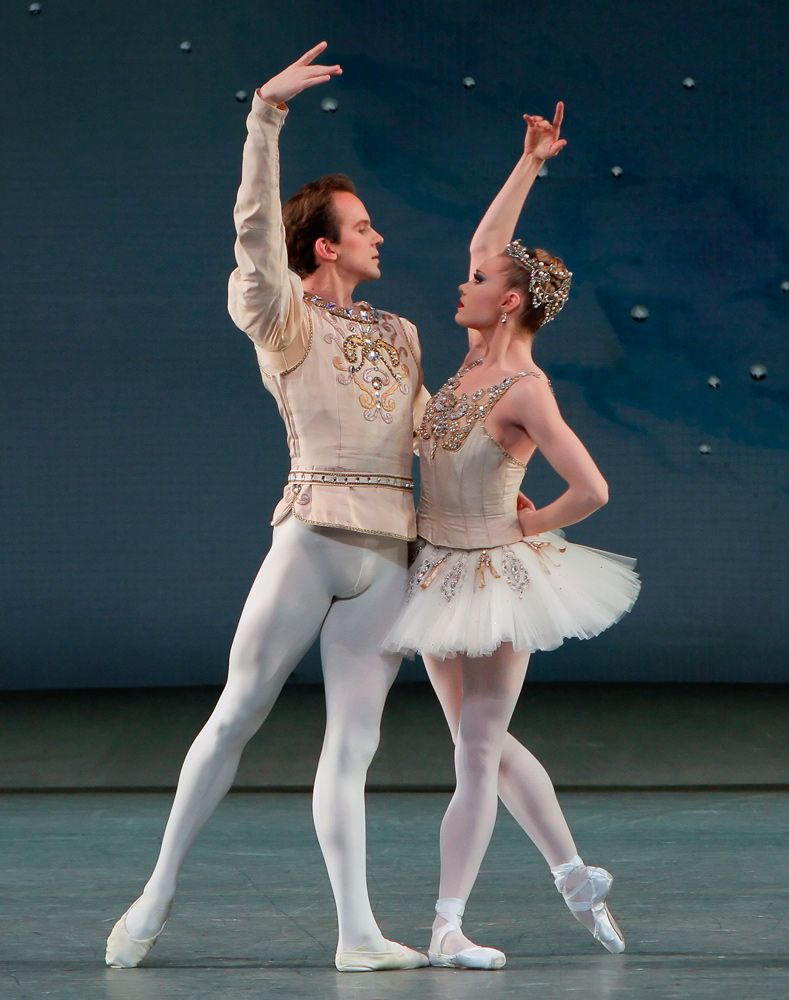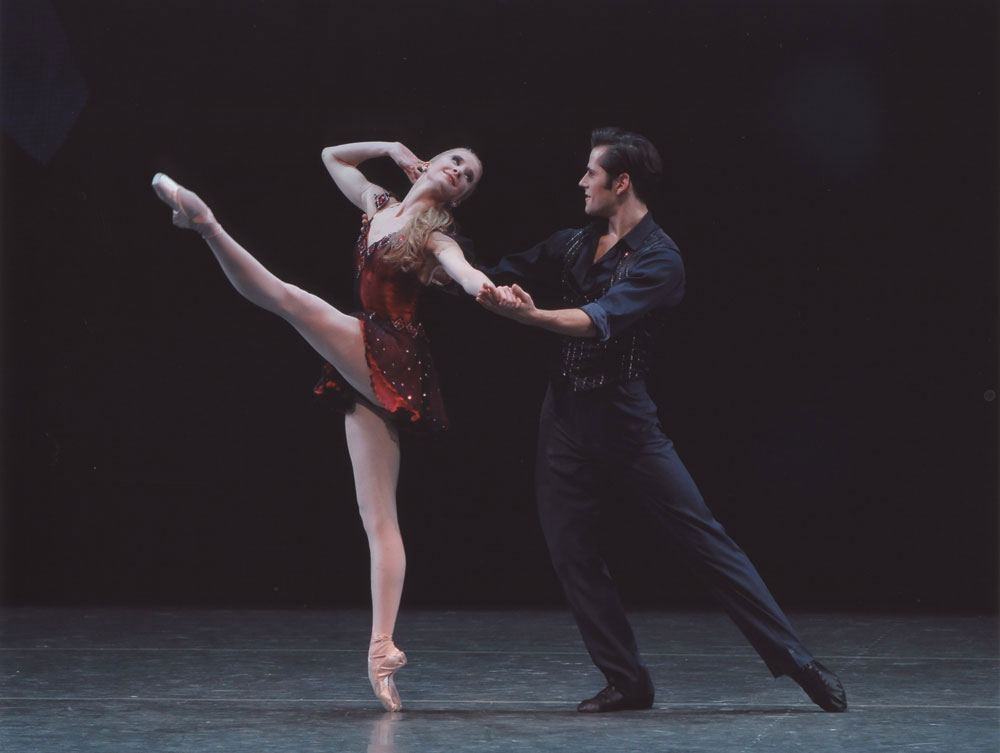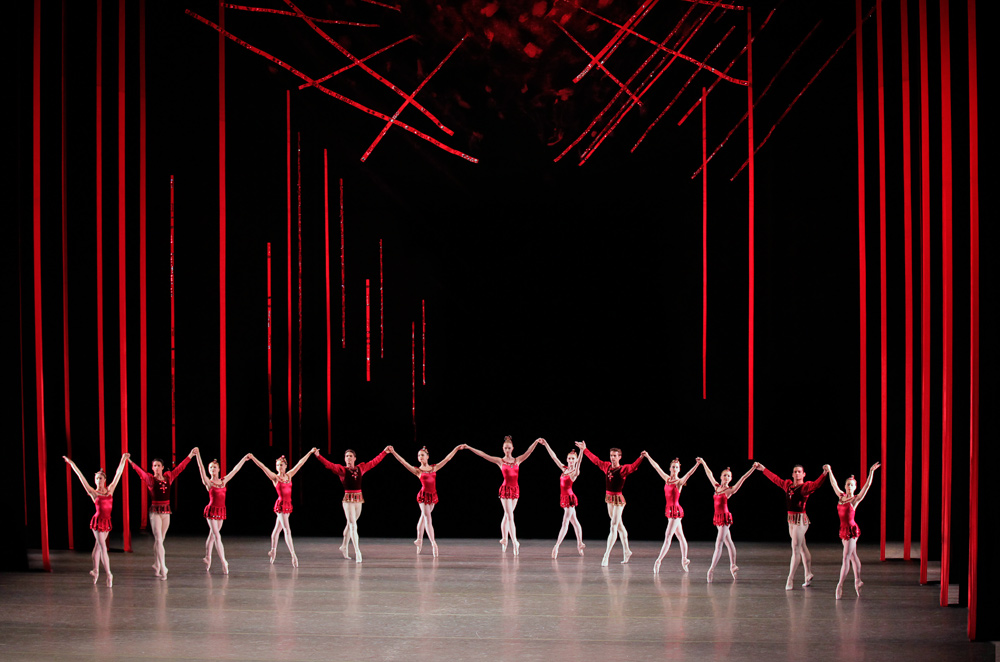
New York City Ballet’s 2014 Winter Season opens in style – with three programs dedicated to the works of its founding choreographers, George Balanchine and Jerome Robbins.
The season opener, All Balanchine, features two neo-classical ballets – Concerto Barocco and Kammermusiek No 2 – which are followed by his lighthearted caper, Who Cares? The second program is devoted to one ballet – Balanchine’s exquisitely crafted Jewels – the world’s first full-length plotless ballet. The third program, Balanchine and Robbins: Masters at Work features two celebrated masterpieces which are firm favorites in the NYCB repertoire – Jerome Robbins’ Dances at a Gathering, and Balanchine’s tribute to Great Britain, Union Jack.
Balanchine created Concerto Barocco, one of his earliest masterworks, to the music of Bach’s Double Violin Concerto. In the first movement, the roles of the two solo instruments are interpreted by two ballerinas, accompanied by a corps of eight dancers. The largo is a pas de deux, followed by the concluding allegro section, in which the entire ensemble brings to life the rhythm and vivacity of Bach’s music.
http://www.nycballet.com/Ballets/C/Concerto-Barocco.aspx
In complete contrast, Kammermusiek No 2 is set to a score by Paul Hindemith. Featuring two principal couples, supported – unusually – by an all-male corps, it’s a work characterized by jagged lines and stylized gestures, reflecting the complexities of its modernist score, and demanding energy, speed and precision.
http://www.nycballet.com/Ballets/K/Kammermusik-No-2.aspx

Photo Credit: Paul Kolnik
Who Cares? was choreographed to 16 songs by George Gershwin, composed between 1924 and 1931, and orchestrated by Hershey Kay. Portraying the distinctive exuberance of Manhattan, the dancers – costumed by Tony Award-winning designer, Santo Loquasto – perform a selection of romantic duets and syncopated group dances to some of Gershwin’s most popular numbers, including, of course, Who Cares?, as well as I Got Rhythm, Strike up the Band, Stairway to Paradise, Embraceable You, Fascinatin’ Rhythm and The Man I Love.
http://www.nycballet.com/Ballets/W/Who-Cares.aspx

Photo credit: Paul Kolnik
Inspired by the artistry of jewellery designer, Claude Arpels, Balanchine crafted his unique ballet, Jewels, around his interpretation of the qualities possessed by three of the most gorgeous gems – emeralds, rubies and diamonds – setting each variation to the music of a different composer. Emeralds features music by Fauré, calling to mind the elegance of the 19th century dances of the French romantics. Rubies – crisp and witty – represents Balanchine’s highly productive collaboration with Igor Stravinsky, and Diamonds is reminiscent of the grandeur of Imperial Russia and the Mariinsky Theatre where Balanchine trained – for which no music is more relevant than that of Tchaikovsky.

http://www.nycballet.com/Season-Tickets/Winter-2014-Programs/JEWELS.aspx
Balanchine and Robbins: Masters at Work features a ballet by each of these brilliant choreographers. Jerome Robbins’ Dances at a Gathering – which marked his return to New York City Ballet after an absence of 13 years – is set against a backdrop of mazurkas, waltzes and études by Chopin. Although characteristic of the composer’s Polish homeland, these pieces nevertheless convey the elegance of Paris, the city in which they were created. The ballet portrays a group of young people, gathered in an open place, who perform a series of dances – alluding to changing partnerships – which correspond to the character of each piece of music.
http://www.nycballet.com/Ballets/D/Dances-at-a-Gathering.aspx
Created to honor the British heritage of the United States at the time of the Bientennial, Union Jack is, unsurprisingly, a very British affair. Balanchine – fascinated by the colorful tartans of Scotland and skirl of the bagpipes – created a set of dances inspired by Scottish military tattoos, which take place in the open square of a castle. A music-hall pas de deux for a Pearly King and Queen represents the City of London, and the finale comprises a series of variations performed in a dockside setting, with hornpipe tunes, sea songs, work chants, jigs and drill orders synonymous with traditions of the Royal Navy, and a Union Jack unfurling behind a set of handflag signals spelling out ‘God Save the Queen’ in semaphore code.
http://www.nycballet.com/Ballets/U/Union-Jack.aspx
For detailed information on dates, times, tickets and the whole Winter 2014 season, please visit the New York City Ballet website www.nycballet.com

Photo credit: Paul Kolnik
